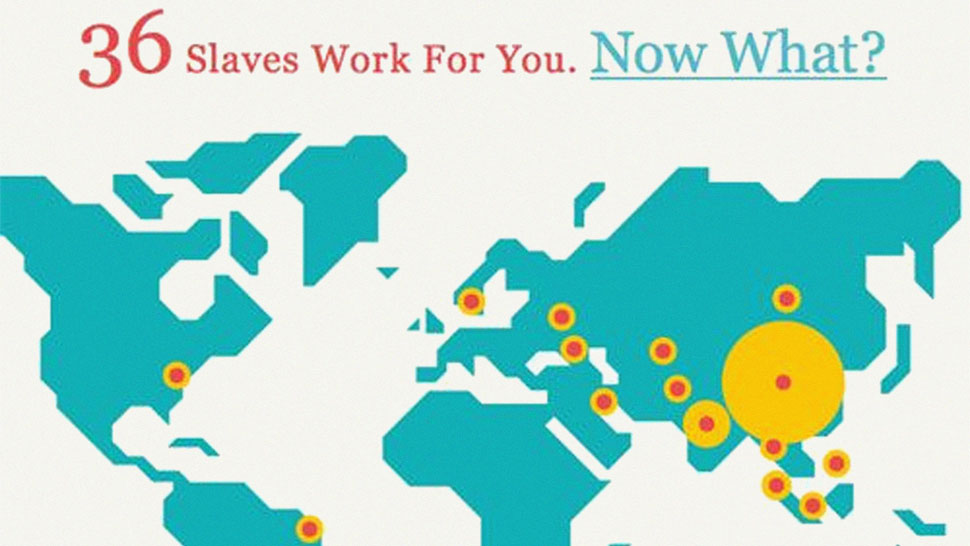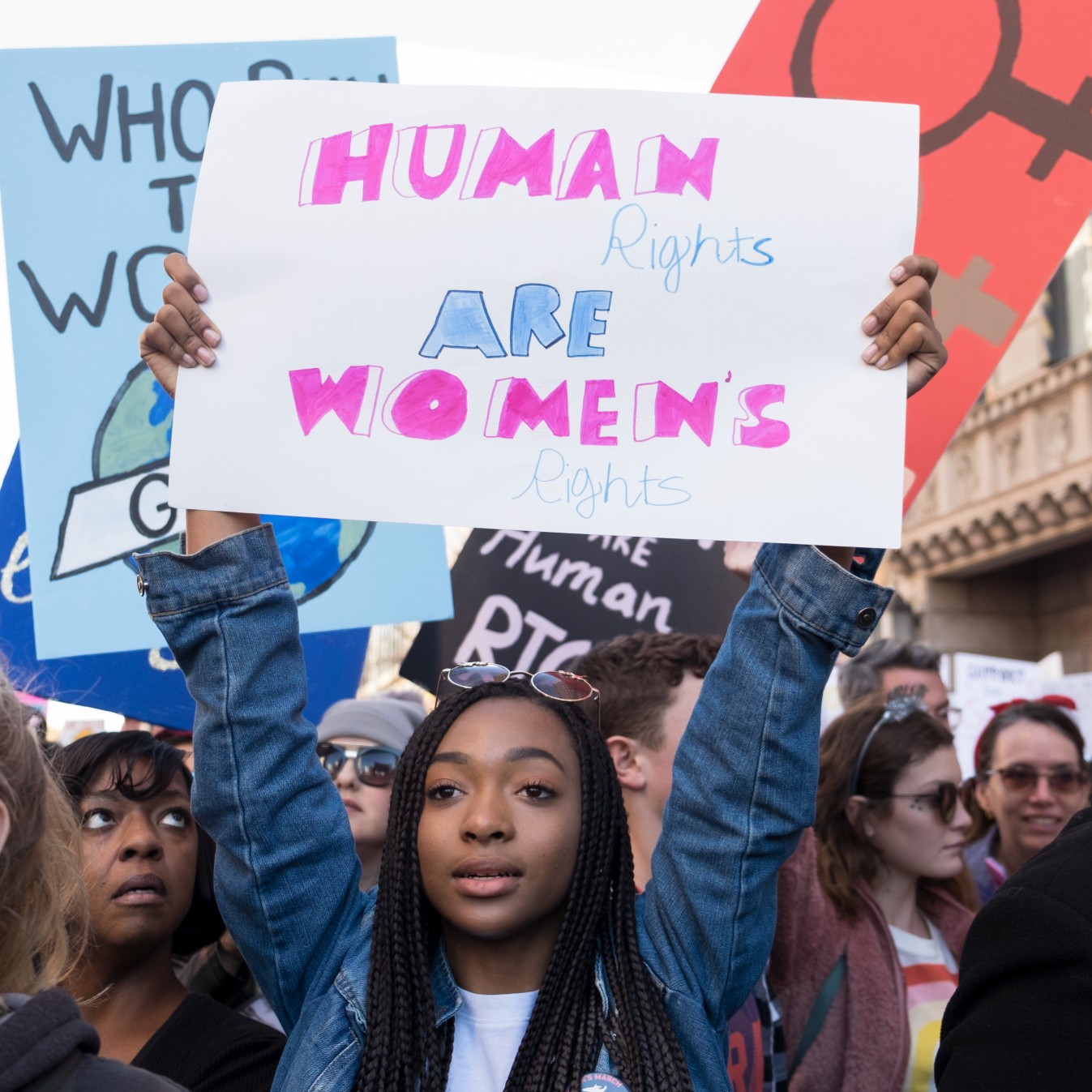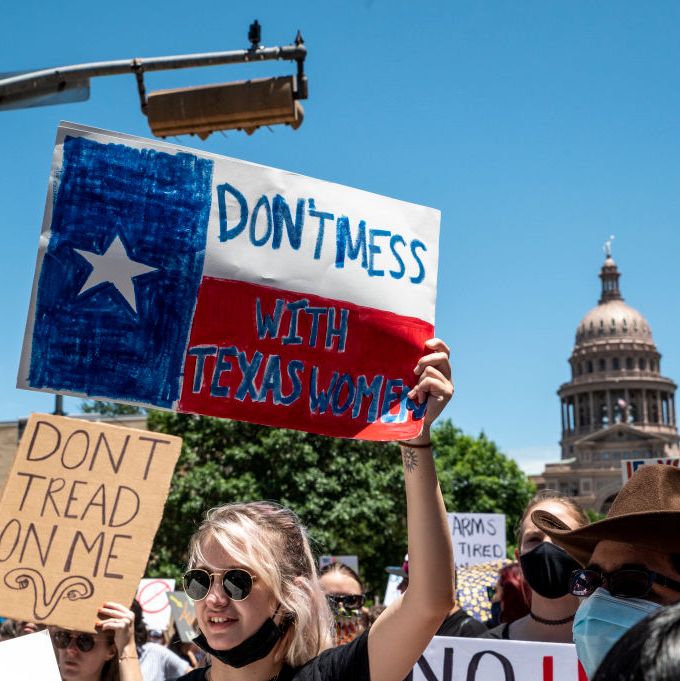What's Your Slavery Footprint?
You might be surprised by how some of your things are actually made.

AS AN URBANITE who chooses to ride the subway rather than drive my car, I've long been concerned about my carbon footprint. Little did I know that slavery, something I thought had been relegated to the history books, has a living footprint all its own.
Thanks to a new website, I've discovered that some 35 forced laborers worldwide likely had a hand in producing the contents of my apartment. Those chilling statistics come courtesy of slaveryfootprint.org, developed by entrepreneur Justin Dillon with backing from the U.S. State Department.
"With up to 27 million slaves in the world, and many working in mining and agriculture, they're touching a lot of the goods that we use," says Alison Kiehl Friedman, deputy director at the U.S. Department of State's Office to Monitor and Combat Trafficking in Persons.
Dillon explains the way the site works: Feed it information about your lifestyle and "an elaborate algorithm calculates where in the world the items were produced. A deep dive is then done on the condition of slavery in each of those areas." (The website defines indentured servitude as "anyone who is forced to work without pay, being economically exploited and unable to walk away.")
To find my footprint, I combed through my apartment and added in my car. The worst offender was clothing: Many pieces were made in China, where human trafficking is pronounced. Out of my cosmetics and toiletries, the body wash had the biggest slavery footprint: It contained both coconut oil and soybeans, which are harvested in West Africa and Brazil, hot spots for trafficking.
I wanted to swear off shopping. But boycotting is not on the site's agenda. "Most businesses have no idea that their third-party suppliers are engaging in slavery," says Dillon. Instead, the website hopes the news will spread via social media, and encourages people to download its "Free World" app, which lets you check in to stores like Best Buy and send a letter to different brands, calling for an investigation of their supply chains. You can also make a donation to Slavery Footprint or groups that aim to help enslaved laborers.
According to Friedman, businesses "should be transparent about their practices." As consumers, we can help make sure that happens.
Stay In The Know
Get exclusive access to fashion and beauty trends, hot-off-the-press celebrity news, and more.
Made by Slaves
Shoes: Leather from India is often procured by the forced labor of lower-caste workers.
Fish: The Thai seafood industry thrives on the labor of Cambodian, Burmese, and Malaysian slaves.
Cars: Many raw materials are mined in Democratic Republic of Congo, where forced labor is common.
Nail polish: Silica in nail polish may be produced by laborers from China's migrant population.
-
 Everything I Wish I Knew Before Going From a Triple D to a Small B
Everything I Wish I Knew Before Going From a Triple D to a Small BWelcome to breast reduction 101.
By Samantha Holender
-
 Bella Hadid's Latest Denim Is Surprisingly Millennial-Coded
Bella Hadid's Latest Denim Is Surprisingly Millennial-CodedThis look is a win for thirty-somethings everywhere.
By Kelsey Stiegman
-
 Royal Sources Give Update on "Distant" Relationship With Prince Harry and King Charles
Royal Sources Give Update on "Distant" Relationship With Prince Harry and King CharlesInsiders close to the Duke of Sussex have revealed whether there is a chance at reconciliation in the near future.
By Kristin Contino
-
 36 Ways Women Still Aren't Equal to Men
36 Ways Women Still Aren't Equal to MenFeatures It's just one of the many ways women still aren't equal to men.
By Brooke Knappenberger
-
 EMILY's List President Laphonza Butler Has Big Plans for the Organization
EMILY's List President Laphonza Butler Has Big Plans for the OrganizationUnder Butler's leadership, the largest resource for women in politics aims to expand Black political power and become more accessible for candidates across the nation.
By Rachel Epstein
-
 Want to Fight for Abortion Rights in Texas? Raise Your Voice to State Legislators
Want to Fight for Abortion Rights in Texas? Raise Your Voice to State LegislatorsEmily Cain, executive director of EMILY's List and and former Minority Leader in Maine, says that to stop the assault on reproductive rights, we need to start demanding more from our state legislatures.
By Emily Cain
-
 Your Abortion Questions, Answered
Your Abortion Questions, AnsweredHere, MC debunks common abortion myths you may be increasingly hearing since Texas' near-total abortion ban went into effect.
By Rachel Epstein
-
 The Future of Afghan Women and Girls Depends on What We Do Next
The Future of Afghan Women and Girls Depends on What We Do NextBetween the U.S. occupation and the Taliban, supporting resettlement for Afghan women and vulnerable individuals is long overdue.
By Rona Akbari
-
 How to Help Afghanistan Refugees and Those Who Need Aid
How to Help Afghanistan Refugees and Those Who Need AidHow To With the situation rapidly evolving, organizations are desperate for help.
By Katherine J. Igoe
-
 It’s Time to Give Domestic Workers the Protections They Deserve
It’s Time to Give Domestic Workers the Protections They DeserveThe National Domestic Workers Bill of Rights, reintroduced today, would establish a new set of standards for the people who work in our homes and take a vital step towards racial and gender equity.
By Ai-jen Poo
-
 The Biden Administration Announced It Will Remove the Hyde Amendment
The Biden Administration Announced It Will Remove the Hyde AmendmentThe pledge was just one of many gender equity commitments made by the administration, including the creation of the first U.S. National Action Plan on Gender-Based Violence.
By Megan DiTrolio